1 of 81
Download to read offline

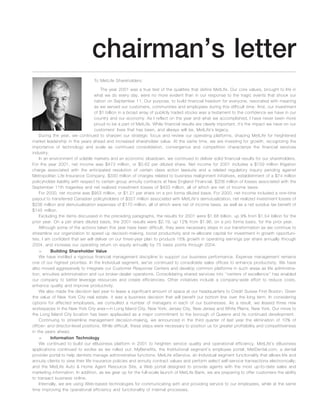

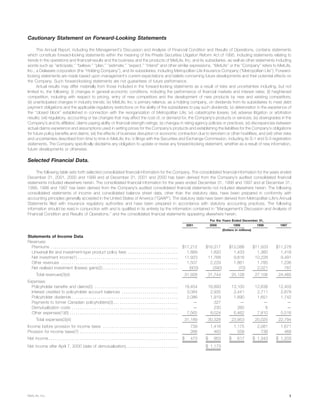
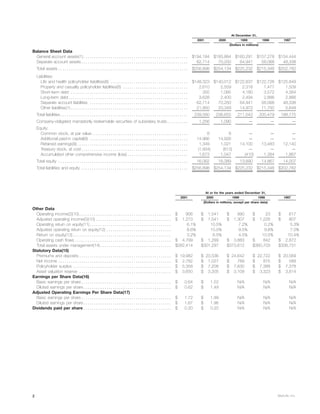
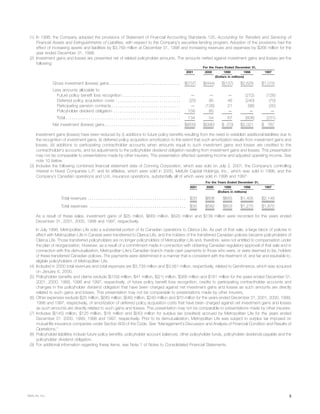

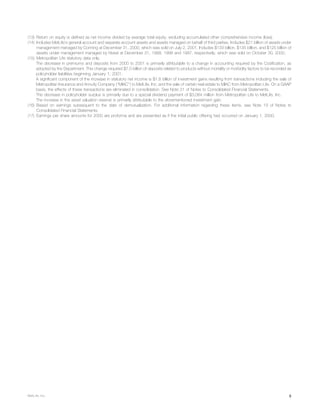

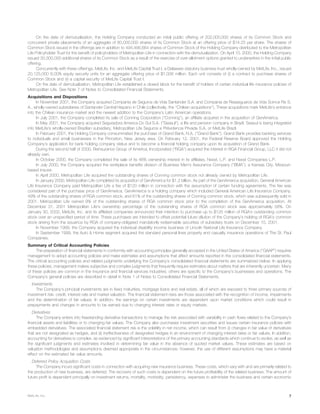
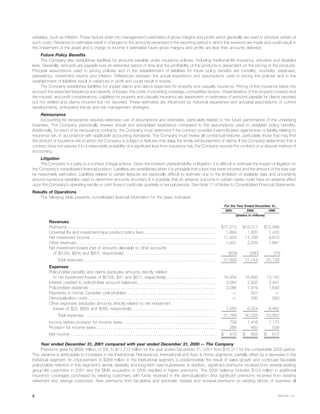


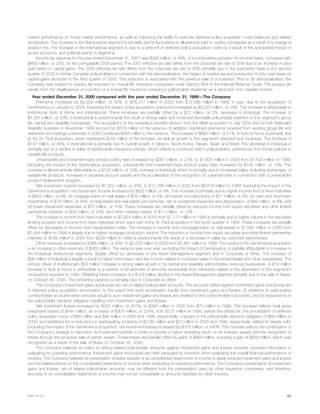

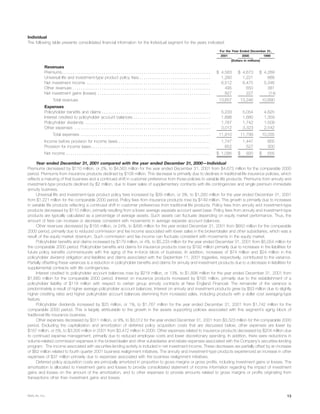
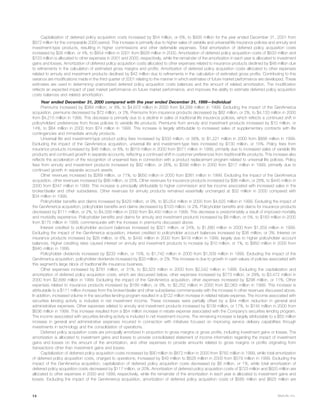


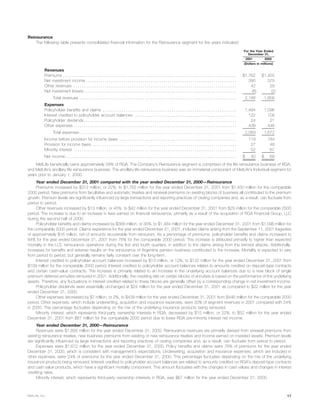

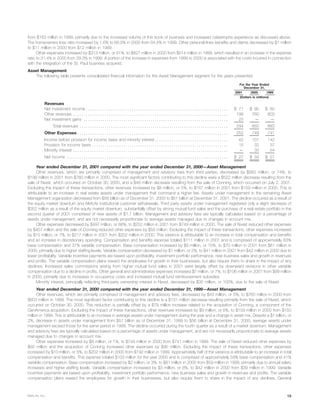
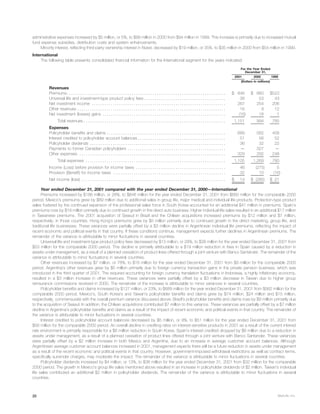
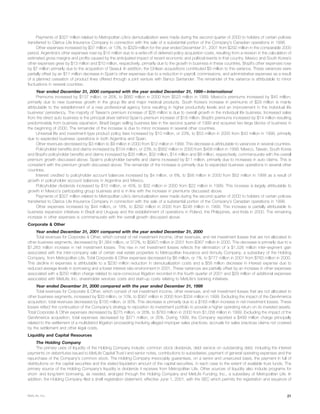
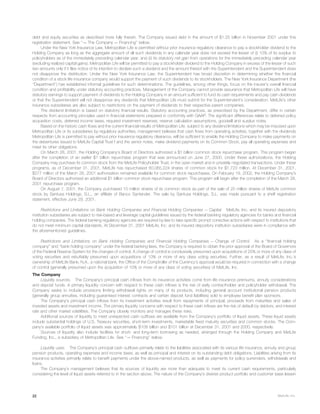
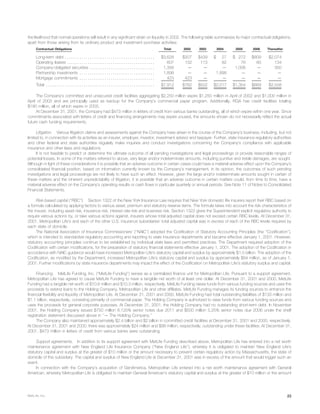
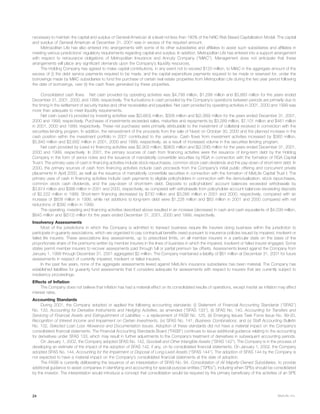

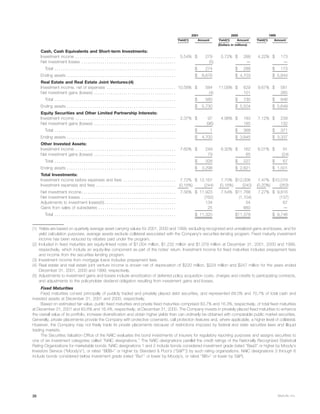
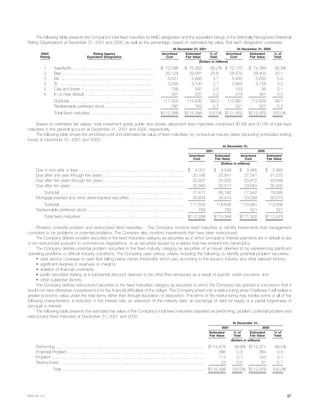
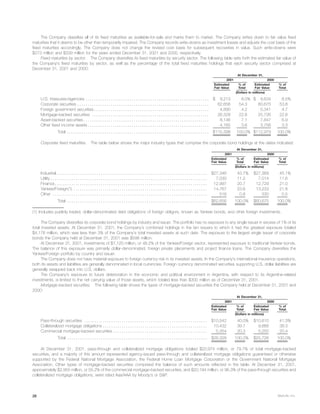
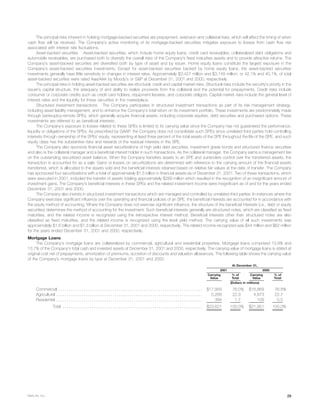
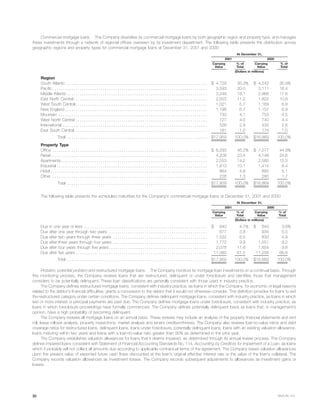

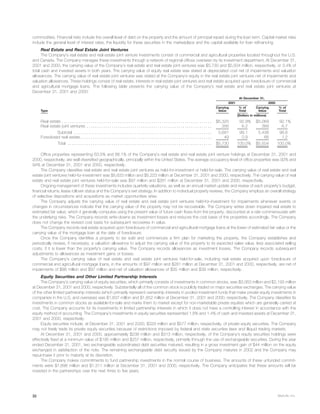
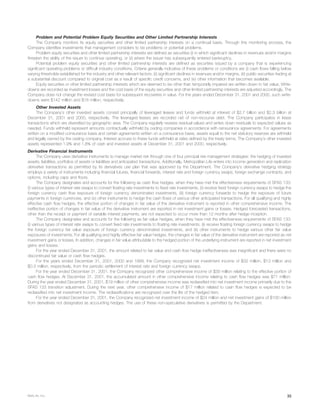
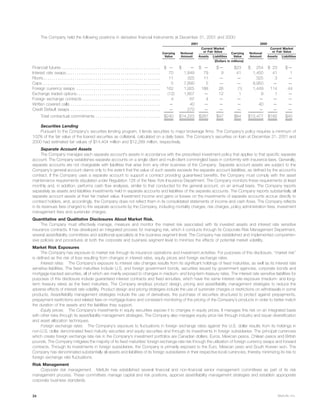



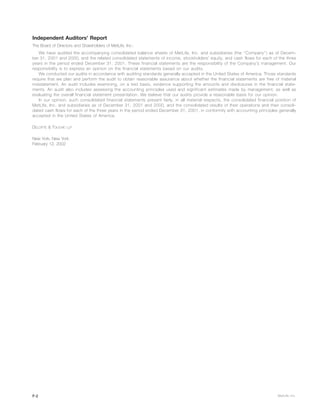

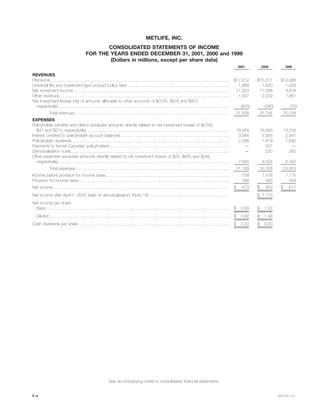
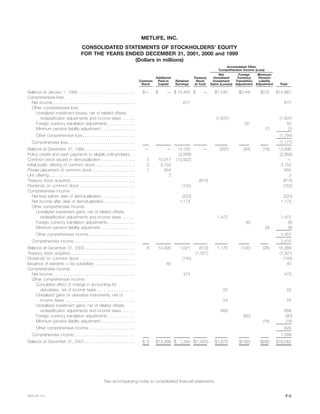
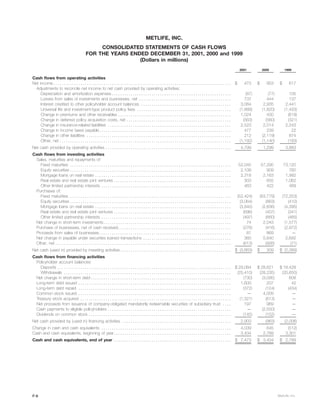
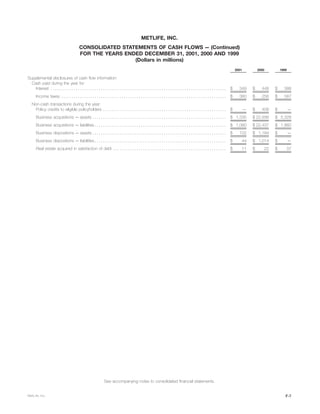
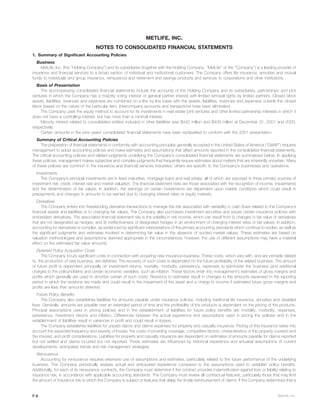
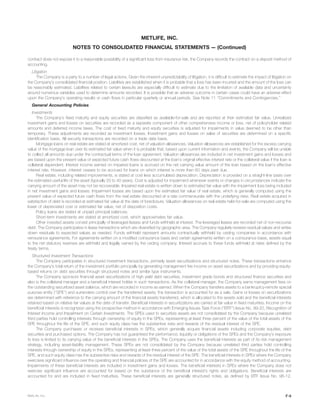


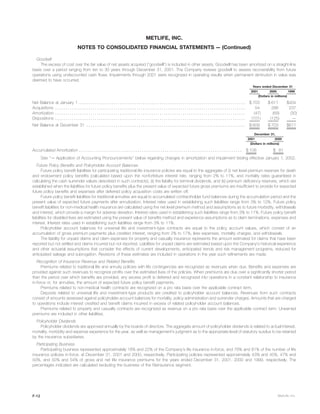

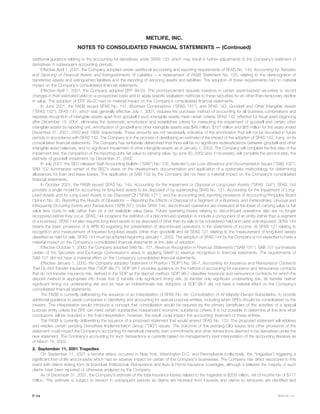

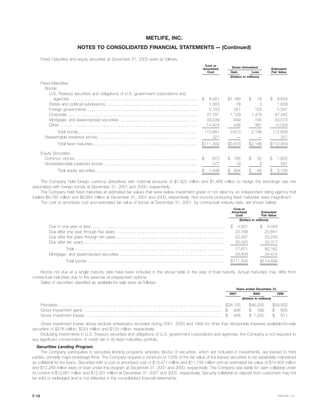
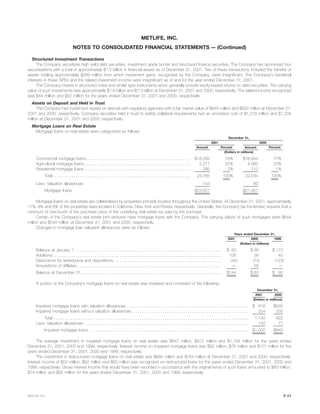
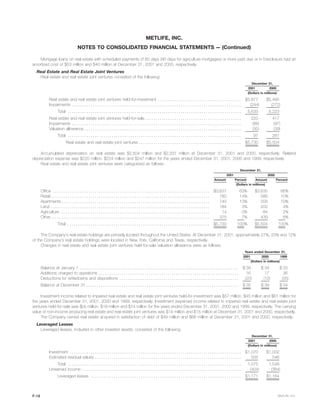
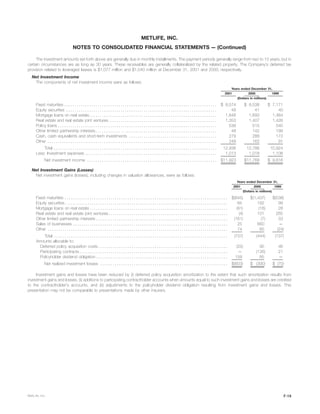

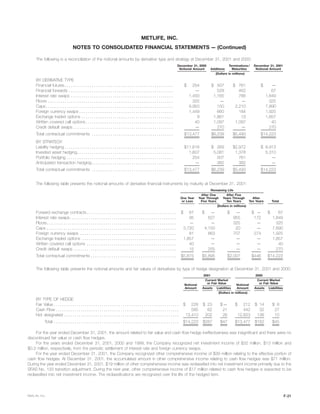
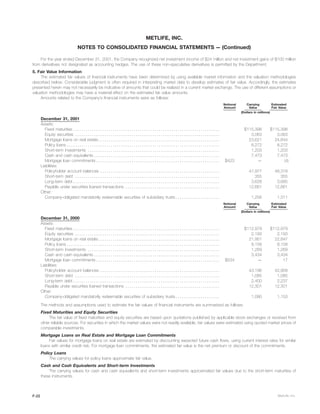

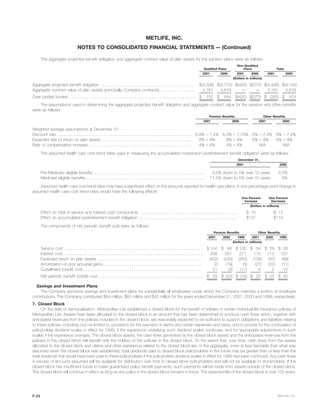
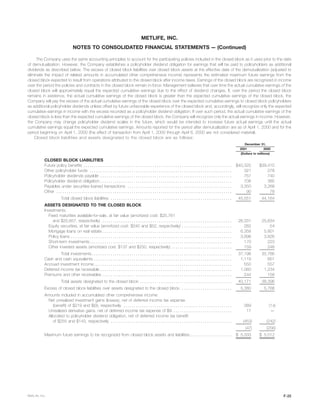

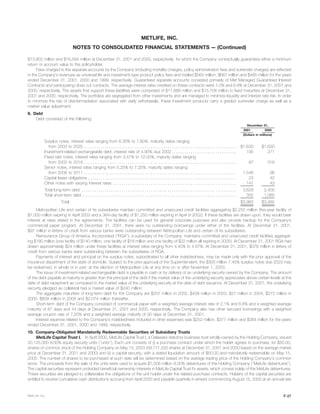
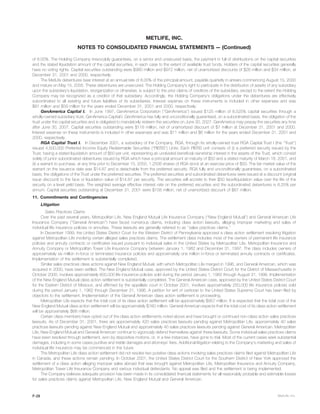

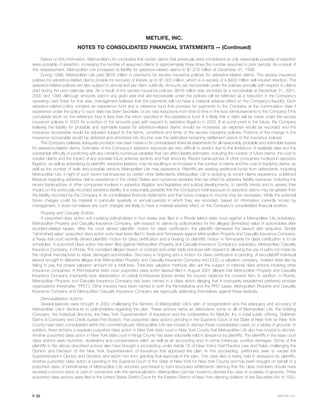
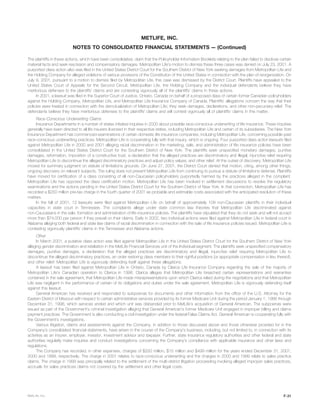



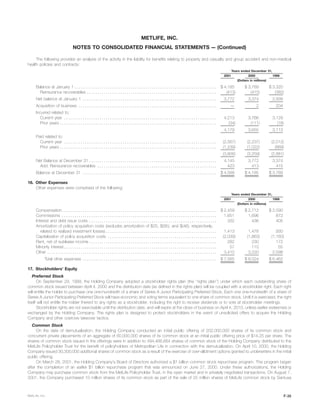
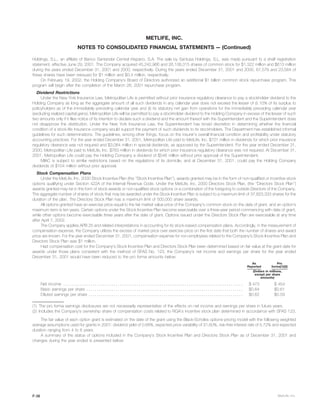
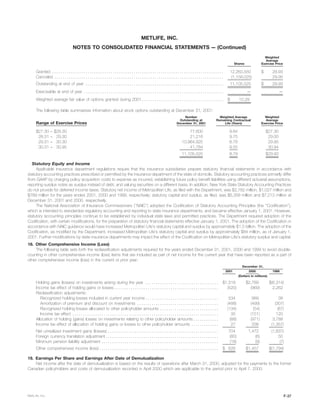
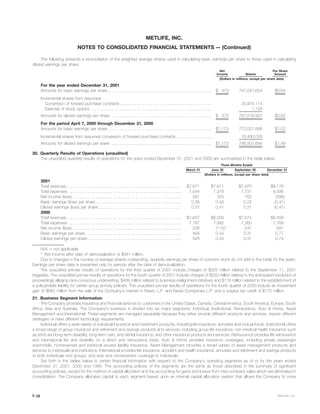
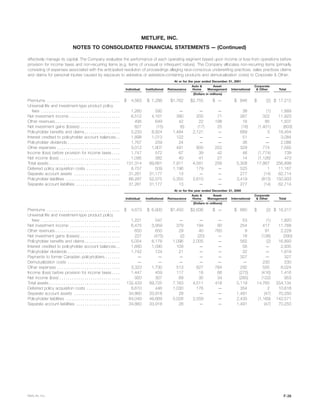
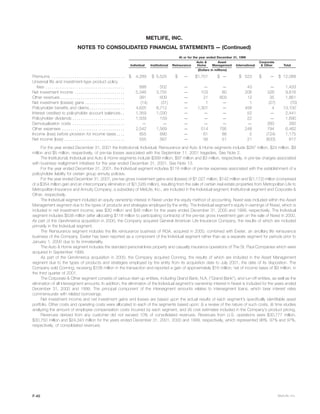

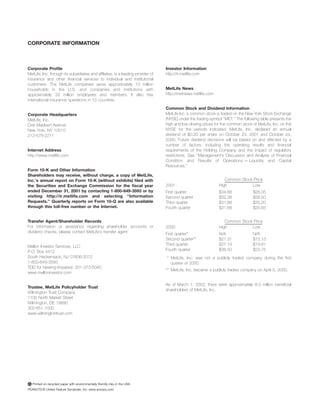
Ad
Recommended
Pfizer at Lehman Brothers Global Health Care Conference
Pfizer at Lehman Brothers Global Health Care Conferencefinance5
?
Martin Mackay, president of Pfizer's Global Research and Development division, outlines Pfizer's 5-point plan to aggressively deliver their phase 2 and 3 pipelines. The plan includes prioritizing their portfolio, becoming a top biotherapeutics company, dramatically raising productivity, and pursuing external science. Pfizer has a rich pipeline of 85 new molecular entities in development across 10 therapeutic areas. Their goal is to rebuild their phase 3 portfolio with 15-20 phase 3 starts per year between 2008-2009. Pfizer expects 15-20 regulatory submissions between 2010-2012. Several investigational drugs, including axitinib and CP-690550, show promising results.21032011
21032011anzaralam
?
The document discusses natural product derived combinatorial libraries and their significance in drug discovery programs. It describes how combinatorial libraries are created through combinatorial synthesis techniques to generate large numbers of compounds that can be screened for biological activity. Libraries derived from natural products are particularly useful as natural products often have novel chemical structures not easily synthesized in labs. The document outlines methods for combinatorial synthesis, including solid phase and parallel synthesis techniques, and how libraries can be screened to identify potential drug candidates.Research and Development
Research and DevelopmentShameem Ali
?
This document summarizes key points from a lecture on research and development (R&D). It discusses best practices in innovation including understanding customer needs, culture of innovation, open innovation, funding R&D, execution, creativity, and intellectual property protection. It provides definitions of R&D, describes the different types of R&D activities from basic research to development. It also discusses integrating R&D with corporate strategy, classifying R&D activities across industries, and the importance of strategic R&D planning and developing a technology portfolio.2002 Caterpillar Inc. Annual Report
2002 Caterpillar Inc. Annual Reportfinance5
?
This annual report summarizes Caterpillar's performance in 2002, a challenging year with declining markets and a stalled global economy. Despite weak industry conditions, Caterpillar achieved strong profits through cost cutting measures. The report highlights how Caterpillar has diversified its business beyond construction machinery through expanded offerings in engine, financing, and logistics services to make the company less vulnerable to economic cycles. It expresses confidence that Caterpillar is well-positioned for future growth when economies rebound given its focus on technology, quality products, and global dealer network.2003 Caterpillar Inc. Annual Report
2003 Caterpillar Inc. Annual Reportfinance5
?
Caterpillar's 2003 annual report outlines steps to building a great company. It discusses (1) inventing revolutionary products like tracked machines that became Caterpillar tractors; (2) choosing distribution partners wisely, like the network of over 200 independent and family-owned dealers worldwide; and (3) continually innovating and anticipating customer needs through new technologies like ACERT engines and e-business solutions for dealers.? ? 2004 Caterpillar Inc. Annual Report
? ? 2004 Caterpillar Inc. Annual Reportfinance5
?
The document is Caterpillar's 2004 annual report. It highlights that 2004 was a very successful year where Caterpillar set sales, revenue, and profit per share records. The company's sales increased over $7 billion and it surpassed its $30 billion sales goal two years ahead of schedule. The report discusses Caterpillar's strong position for future success due to its technology leadership, global footprint, focus on key industries, and emphasis on people. It celebrates the accomplishments of Caterpillar's employees around the world. ? 2005 Caterpillar Inc. Annual Report
? 2005 Caterpillar Inc. Annual Reportfinance5
?
This annual report summary covers Caterpillar's record financial results in 2005, including sales and revenues of $36.34 billion and profits of $2.85 billion. Caterpillar's order backlog indicates continued market strength in 2006. The company implemented a new enterprise strategy in 2005 focused on people, product, process performance, and profitable growth. Key goals include improving employee safety, product quality, and order-to-delivery times. Caterpillar remains the global leader in its industries and is well positioned for more growth, with a target of $50 billion in sales by 2010. Challenges include making further safety, quality, and availability improvements to maintain leadership. ? 2006 General and Financial Information (Proxy Appendix)
? 2006 General and Financial Information (Proxy Appendix)finance5
?
This document provides an overview of Caterpillar Inc.'s financial information for 2006 including:
- Sales increased to $41.5 billion in 2006 from $36.3 billion in 2005 driven by higher machinery and engine sales.
- Net income increased to $3.5 billion in 2006 from $2.8 billion in 2005.
- Total assets were $50.9 billion at the end of 2006, up from $47.1 billion in 2005, with inventory and property, plant and equipment being the largest assets.Company Information
Company Informationfinance5
?
The document provides biographical information on the members of Caterpillar's Board of Directors and lists the company's executive officers. It identifies the 17 members of the Board of Directors, including their backgrounds, other directorships, and years of service on Caterpillar's board. It also lists the company's executive officers as of the end of 2007, identifying their positions. Finally, it identifies the members and chairs of the Board's four committees: Audit, Compensation, Governance, and Public Policy. ? Financials
? Financialsfinance5
?
This document provides financial information about Caterpillar, including sales and revenue figures, profits, expenses, number of employees, patent information, and breakdowns of machinery and engine sales by region and industry. It shows that in 2007 Caterpillar had record sales and revenue of $44.9 billion, profit of $3.5 billion, over 100,000 employees worldwide, and was granted over 400 patents. The majority of machinery and engine sales were in North America, EAME, and Asia/Pacific regions.At A Glance
At A Glancefinance5
?
Caterpillar is a global company that manufactures machinery, engines, and financial products. In 2007, Caterpillar had total sales and revenues of $44.9 billion and employed over 101,000 people across its global operations. The document provides an overview of Caterpillar's business segments, product lines, geographic presence, and financial results for 2007.Chairman's Letter
Chairman's Letterfinance5
?
- 2007 was a record year for Caterpillar, with sales up globally but down 11% in North America, demonstrating the strength of their global business model.
- Their integrated services businesses grew 16% and made up 36% of sales, providing earnings stability despite weaknesses in some markets.
- Caterpillar had their fifth consecutive year of record sales and fourth year of record profits, and expect another record year in 2008 despite continued weakness in the US.Success Stories
Success Storiesfinance5
?
This document discusses how Caterpillar delivers solutions to customers in the oil and gas industry globally. It describes Caterpillar's involvement at each stage of the oil and gas process, from exploring for new reserves using engines and power systems, to extracting oil and gas from wells, processing and treating the resources, and transporting the final products to distributors and end users. The document emphasizes Caterpillar's reliability, serviceability, and ability to power facilities and operations around the world at every link in the oil and gas value chain. ? Caterpillar Production System
? Caterpillar Production Systemfinance5
?
The Caterpillar Production System (CPS) aims to dramatically improve safety, quality, and efficiency through employee participation, process transformation, waste elimination and continuous improvement. In 2007, CPS training reached over 50,000 employees and engaged more than 60 dealers. Employees submitted over 160,000 continuous improvement ideas. CPS is building a future Caterpillar with real traction in its second year through transforming processes, streamlining work, and involving employees, dealers and suppliers.Caterpillar and Oil & Gas
Caterpillar and Oil & Gasfinance5
?
Caterpillar has a deep and integral presence in the oil and gas industry, providing power and equipment from exploration through distribution. They supply engines, turbines, machines and support for applications including drilling, production, processing, pipeline construction and transportation. Caterpillar has built long-term customer relationships in this industry by meeting evolving needs with efficient, durable and environmentally responsible solutions.Taking Caterpillar to Market
Taking Caterpillar to Marketfinance5
?
The document summarizes Caterpillar's global process for taking machines to market for customers. It involves understanding customer needs, designing solutions through global engineering collaboration, utilizing a global supply chain, coordinating worldwide manufacturing, assembling products in over 40 countries, distributing parts globally through logistics, providing financial options, offering local service and support through dealers, and sustaining machines by remanufacturing parts. The process is described as delivering unmatched power, dependability and value through an integrated team effort to meet customer needs.caterpillar ? 2007 Annual Report
caterpillar ? 2007 Annual Report finance5
?
The document is Caterpillar's 2007 annual report. It describes how Caterpillar is implementing the Caterpillar Production System (CPS) across its global operations to dramatically improve safety, quality, and production velocity. CPS is based on 6 Sigma principles and aims to standardize processes, eliminate waste, and encourage continuous improvement through employee participation. In 2007, Caterpillar expanded CPS training to 50,000 employees and engaged over 60 dealers in quality programs using CPS methods. The annual report highlights how CPS is transforming Caterpillar's operations from order receipt through delivery to customers.caterpillar Quarterly Releases ? ? 1Q07 Cat Financial Results
caterpillar Quarterly Releases ? ? 1Q07 Cat Financial Resultsfinance5
?
Cat Financial reported record first quarter revenues of $713 million, up 9% from the previous year, with profits of $125 million, a 6% increase. The revenue growth was driven by higher interest rates on existing loans and growth in the loan portfolio. New retail financing increased 5% to $2.74 billion due to growth in Europe and other segments, while past dues increased but remained within expectations. The results demonstrate the strength of Caterpillar's financial services in supporting diverse industries.caterpillar Quarterly Releases 2Q07 Cat Financial Results
caterpillar Quarterly Releases 2Q07 Cat Financial Resultsfinance5
?
Caterpillar Financial Services Corporation (Cat Financial) reported record quarterly revenues of $747 million, up 11% from the same quarter in 2006. Quarterly profit after tax was also a record at $123 million, increasing 16% over 2006. New retail financing reached a record of $3.65 billion, growing 14% compared to the previous year. For the six months ending June 30, 2007, revenues were up 10% to $1.46 billion while profit after tax increased 11% to $248 million, with new retail financing expanding 10% to $6.397 billion.caterpillar Quarterly Releases 3Q07 Cat Financial Results
caterpillar Quarterly Releases 3Q07 Cat Financial Resultsfinance5
?
Cat Financial announced record third quarter 2007 results, with revenues increasing 5% to $758 million and profit after tax increasing 1% to $133 million compared to the third quarter of 2006. New retail financing reached a record $3.58 billion, rising 21% over the previous year. While some indicators reflected increases in past dues and write-offs due to the softening U.S. housing industry, these remained below historical averages. Continued global growth outside the U.S. compensated for the weaker domestic housing market.caterpillar Quarterly Releases ? 4Q07 Cat Financial Results
caterpillar Quarterly Releases ? 4Q07 Cat Financial Resultsfinance5
?
Cat Financial reported record revenues of $2.998 billion for 2007, up 9% from 2006. Profits were also up, with profit after tax reaching a record $494 million, a 4% increase over 2006. New retail financing reached a record $14.07 billion, up 16% from 2006. However, past dues over 30 days rose to 2.36% due to weakness in the US housing market, though write-offs remained low by historical standards. The company delivered strong results despite challenges in credit markets and housing.caterpillar Quarterly Releases1Q08 Cat Financial Results
caterpillar Quarterly Releases1Q08 Cat Financial Resultsfinance5
?
Caterpillar Financial Services Corporation (Cat Financial) reported record first quarter revenues of $779 million, a 9% increase over the previous year. Profits after tax were $124 million, a 1% decrease. New retail financing reached a record $3.47 billion, a 27% increase due to growth in Asia-Pacific, Diversified Services and Europe. While performance was strong, past dues and write-offs increased due to the softening U.S. housing industry. Cat Financial remains focused on providing reliable financing to customers and dealers.caterpillar Quarterly Releases ? 2Q08 Cat Financial Results
caterpillar Quarterly Releases ? 2Q08 Cat Financial Resultsfinance5
?
Cat Financial reported record second quarter revenues of $785 million, a 5% increase over the previous year. Net income increased 6% to $130 million. New retail financing reached a record high of $4.6 billion, up 26% compared to the second year. While past dues increased from the previous year, write-offs remained in line with historical averages. The company president said Cat Financial continues to deliver reliable earnings and be a source of financing for customers, despite economic uncertainty in some markets.Middle East Conflict Sparks Oil Price Surge ©C Global Markets on Alert
Middle East Conflict Sparks Oil Price Surge ©C Global Markets on Alert Swiss International University SIU
?
Tensions between Israel and Iran have intensified, with recent strikes on key oil and gas facilities sending shockwaves through global markets. RECENT DEVELOPMENT IN TAXATION OF CHARITABLE TRUST
RECENT DEVELOPMENT IN TAXATION OF CHARITABLE TRUSTimccci
?
RECENT DEVELOPMENT IN TAXATION OF CHARITABLE TRUST
More Related Content
More from finance5 (20)
? ? 2004 Caterpillar Inc. Annual Report
? ? 2004 Caterpillar Inc. Annual Reportfinance5
?
The document is Caterpillar's 2004 annual report. It highlights that 2004 was a very successful year where Caterpillar set sales, revenue, and profit per share records. The company's sales increased over $7 billion and it surpassed its $30 billion sales goal two years ahead of schedule. The report discusses Caterpillar's strong position for future success due to its technology leadership, global footprint, focus on key industries, and emphasis on people. It celebrates the accomplishments of Caterpillar's employees around the world. ? 2005 Caterpillar Inc. Annual Report
? 2005 Caterpillar Inc. Annual Reportfinance5
?
This annual report summary covers Caterpillar's record financial results in 2005, including sales and revenues of $36.34 billion and profits of $2.85 billion. Caterpillar's order backlog indicates continued market strength in 2006. The company implemented a new enterprise strategy in 2005 focused on people, product, process performance, and profitable growth. Key goals include improving employee safety, product quality, and order-to-delivery times. Caterpillar remains the global leader in its industries and is well positioned for more growth, with a target of $50 billion in sales by 2010. Challenges include making further safety, quality, and availability improvements to maintain leadership. ? 2006 General and Financial Information (Proxy Appendix)
? 2006 General and Financial Information (Proxy Appendix)finance5
?
This document provides an overview of Caterpillar Inc.'s financial information for 2006 including:
- Sales increased to $41.5 billion in 2006 from $36.3 billion in 2005 driven by higher machinery and engine sales.
- Net income increased to $3.5 billion in 2006 from $2.8 billion in 2005.
- Total assets were $50.9 billion at the end of 2006, up from $47.1 billion in 2005, with inventory and property, plant and equipment being the largest assets.Company Information
Company Informationfinance5
?
The document provides biographical information on the members of Caterpillar's Board of Directors and lists the company's executive officers. It identifies the 17 members of the Board of Directors, including their backgrounds, other directorships, and years of service on Caterpillar's board. It also lists the company's executive officers as of the end of 2007, identifying their positions. Finally, it identifies the members and chairs of the Board's four committees: Audit, Compensation, Governance, and Public Policy. ? Financials
? Financialsfinance5
?
This document provides financial information about Caterpillar, including sales and revenue figures, profits, expenses, number of employees, patent information, and breakdowns of machinery and engine sales by region and industry. It shows that in 2007 Caterpillar had record sales and revenue of $44.9 billion, profit of $3.5 billion, over 100,000 employees worldwide, and was granted over 400 patents. The majority of machinery and engine sales were in North America, EAME, and Asia/Pacific regions.At A Glance
At A Glancefinance5
?
Caterpillar is a global company that manufactures machinery, engines, and financial products. In 2007, Caterpillar had total sales and revenues of $44.9 billion and employed over 101,000 people across its global operations. The document provides an overview of Caterpillar's business segments, product lines, geographic presence, and financial results for 2007.Chairman's Letter
Chairman's Letterfinance5
?
- 2007 was a record year for Caterpillar, with sales up globally but down 11% in North America, demonstrating the strength of their global business model.
- Their integrated services businesses grew 16% and made up 36% of sales, providing earnings stability despite weaknesses in some markets.
- Caterpillar had their fifth consecutive year of record sales and fourth year of record profits, and expect another record year in 2008 despite continued weakness in the US.Success Stories
Success Storiesfinance5
?
This document discusses how Caterpillar delivers solutions to customers in the oil and gas industry globally. It describes Caterpillar's involvement at each stage of the oil and gas process, from exploring for new reserves using engines and power systems, to extracting oil and gas from wells, processing and treating the resources, and transporting the final products to distributors and end users. The document emphasizes Caterpillar's reliability, serviceability, and ability to power facilities and operations around the world at every link in the oil and gas value chain. ? Caterpillar Production System
? Caterpillar Production Systemfinance5
?
The Caterpillar Production System (CPS) aims to dramatically improve safety, quality, and efficiency through employee participation, process transformation, waste elimination and continuous improvement. In 2007, CPS training reached over 50,000 employees and engaged more than 60 dealers. Employees submitted over 160,000 continuous improvement ideas. CPS is building a future Caterpillar with real traction in its second year through transforming processes, streamlining work, and involving employees, dealers and suppliers.Caterpillar and Oil & Gas
Caterpillar and Oil & Gasfinance5
?
Caterpillar has a deep and integral presence in the oil and gas industry, providing power and equipment from exploration through distribution. They supply engines, turbines, machines and support for applications including drilling, production, processing, pipeline construction and transportation. Caterpillar has built long-term customer relationships in this industry by meeting evolving needs with efficient, durable and environmentally responsible solutions.Taking Caterpillar to Market
Taking Caterpillar to Marketfinance5
?
The document summarizes Caterpillar's global process for taking machines to market for customers. It involves understanding customer needs, designing solutions through global engineering collaboration, utilizing a global supply chain, coordinating worldwide manufacturing, assembling products in over 40 countries, distributing parts globally through logistics, providing financial options, offering local service and support through dealers, and sustaining machines by remanufacturing parts. The process is described as delivering unmatched power, dependability and value through an integrated team effort to meet customer needs.caterpillar ? 2007 Annual Report
caterpillar ? 2007 Annual Report finance5
?
The document is Caterpillar's 2007 annual report. It describes how Caterpillar is implementing the Caterpillar Production System (CPS) across its global operations to dramatically improve safety, quality, and production velocity. CPS is based on 6 Sigma principles and aims to standardize processes, eliminate waste, and encourage continuous improvement through employee participation. In 2007, Caterpillar expanded CPS training to 50,000 employees and engaged over 60 dealers in quality programs using CPS methods. The annual report highlights how CPS is transforming Caterpillar's operations from order receipt through delivery to customers.caterpillar Quarterly Releases ? ? 1Q07 Cat Financial Results
caterpillar Quarterly Releases ? ? 1Q07 Cat Financial Resultsfinance5
?
Cat Financial reported record first quarter revenues of $713 million, up 9% from the previous year, with profits of $125 million, a 6% increase. The revenue growth was driven by higher interest rates on existing loans and growth in the loan portfolio. New retail financing increased 5% to $2.74 billion due to growth in Europe and other segments, while past dues increased but remained within expectations. The results demonstrate the strength of Caterpillar's financial services in supporting diverse industries.caterpillar Quarterly Releases 2Q07 Cat Financial Results
caterpillar Quarterly Releases 2Q07 Cat Financial Resultsfinance5
?
Caterpillar Financial Services Corporation (Cat Financial) reported record quarterly revenues of $747 million, up 11% from the same quarter in 2006. Quarterly profit after tax was also a record at $123 million, increasing 16% over 2006. New retail financing reached a record of $3.65 billion, growing 14% compared to the previous year. For the six months ending June 30, 2007, revenues were up 10% to $1.46 billion while profit after tax increased 11% to $248 million, with new retail financing expanding 10% to $6.397 billion.caterpillar Quarterly Releases 3Q07 Cat Financial Results
caterpillar Quarterly Releases 3Q07 Cat Financial Resultsfinance5
?
Cat Financial announced record third quarter 2007 results, with revenues increasing 5% to $758 million and profit after tax increasing 1% to $133 million compared to the third quarter of 2006. New retail financing reached a record $3.58 billion, rising 21% over the previous year. While some indicators reflected increases in past dues and write-offs due to the softening U.S. housing industry, these remained below historical averages. Continued global growth outside the U.S. compensated for the weaker domestic housing market.caterpillar Quarterly Releases ? 4Q07 Cat Financial Results
caterpillar Quarterly Releases ? 4Q07 Cat Financial Resultsfinance5
?
Cat Financial reported record revenues of $2.998 billion for 2007, up 9% from 2006. Profits were also up, with profit after tax reaching a record $494 million, a 4% increase over 2006. New retail financing reached a record $14.07 billion, up 16% from 2006. However, past dues over 30 days rose to 2.36% due to weakness in the US housing market, though write-offs remained low by historical standards. The company delivered strong results despite challenges in credit markets and housing.caterpillar Quarterly Releases1Q08 Cat Financial Results
caterpillar Quarterly Releases1Q08 Cat Financial Resultsfinance5
?
Caterpillar Financial Services Corporation (Cat Financial) reported record first quarter revenues of $779 million, a 9% increase over the previous year. Profits after tax were $124 million, a 1% decrease. New retail financing reached a record $3.47 billion, a 27% increase due to growth in Asia-Pacific, Diversified Services and Europe. While performance was strong, past dues and write-offs increased due to the softening U.S. housing industry. Cat Financial remains focused on providing reliable financing to customers and dealers.caterpillar Quarterly Releases ? 2Q08 Cat Financial Results
caterpillar Quarterly Releases ? 2Q08 Cat Financial Resultsfinance5
?
Cat Financial reported record second quarter revenues of $785 million, a 5% increase over the previous year. Net income increased 6% to $130 million. New retail financing reached a record high of $4.6 billion, up 26% compared to the second year. While past dues increased from the previous year, write-offs remained in line with historical averages. The company president said Cat Financial continues to deliver reliable earnings and be a source of financing for customers, despite economic uncertainty in some markets.Recently uploaded (20)
Middle East Conflict Sparks Oil Price Surge ©C Global Markets on Alert
Middle East Conflict Sparks Oil Price Surge ©C Global Markets on Alert Swiss International University SIU
?
Tensions between Israel and Iran have intensified, with recent strikes on key oil and gas facilities sending shockwaves through global markets. RECENT DEVELOPMENT IN TAXATION OF CHARITABLE TRUST
RECENT DEVELOPMENT IN TAXATION OF CHARITABLE TRUSTimccci
?
RECENT DEVELOPMENT IN TAXATION OF CHARITABLE TRUST
Shocks and Inequality An Empirical Exploration
Shocks and Inequality An Empirical ExplorationGRAPE
?
We study the contribution of supply and demand shocks to income inequality in a panel setting. In particular, we exploit the newly created Global Repository of Income Dynamics to study how unanticipated supply and demand shocks identified using long-run restrictions affect income inequality as measured by Gini. We find that demand shocks originating in the United States, on average, increase income dispersion, which we interpret as the impact of changes to US consumption of foreign goods and services. Supply shocks also tend to increase income dispersion, but have a much weaker and short-lived impact. A comparison with responses to domestic shocks reveals that demand shocks exhibit a similar dynamic. Domestic supply shocks are linked to declines in income dispersion. Adrien Matray - A Prominent Macroeconomist
Adrien Matray - A Prominent MacroeconomistAdrien Matray
?
Adrien Matray is an applied macroeconomist whose research examines how finance shapes economic growth and economic inequality. Growing up in the less affluent suburbs of Paris, where economic disparities were stark, sparked his interest in understanding how financial systems affect well-being. His work addresses critical issues like income inequality and lack of access to formal financial institutions, aiming to inform policies that better regulate alternative financial services and promote equitable economic outcomes, especially for low-income communities.Panel 2 - Panel discussion - Demystifying key critical & practical issues und...
Panel 2 - Panel discussion - Demystifying key critical & practical issues und...imccci
?
Panel 2 - Panel discussion - Demystifying key critical & practical issues under VSV 2.0
ShivsrushtiĪ»s Cultural Revival Backed Strongly by Abhay Bhutada Foundation.pdf
ShivsrushtiĪ»s Cultural Revival Backed Strongly by Abhay Bhutada Foundation.pdfLokesh Agrawal
?
Shivsrushti, a cultural theme park near Pune dedicated to the legacy of Chhatrapati Shivaji Maharaj, has received strong and consistent support from the Abhay Bhutada Foundation. Under the guidance of historian Babasaheb Purandare, the park blends traditional fort replicas with modern technology like augmented reality and interactive exhibits to make history come alive. The FoundationĪ»s contributions have enabled operational upgrades, improved access for underprivileged students, and introduced mobile museums that take cultural learning to remote areas. Through hands-on workshops and community involvement, Shivsrushti promotes both education and local skill development. With plans for digital centres and cultural exchange, the FoundationĪ»s long-term commitment is helping transform the park into a vibrant, forward-looking hub of historical learning.2025 RWA Report: When Crypto Gets Real | CoinGecko
2025 RWA Report: When Crypto Gets Real | CoinGeckoCoinGecko Research
?
The revival of real world assets (RWA) in crypto marked one of 2024Ī»s most quietly transformative narratives. While attention remained fixated on memecoins, Layer 2 ecosystems, and political betting markets, RWA steadily evolved from a niche experiment into one of the most credible and capitalized sectors in crypto.
So, how far have the core RWA verticals come since the start of 2024?
WeĪ»ve summarized the key highlights, but be sure to dig into the full 18 slides below.SWING TRADING COURSE BY FINANCEWORLD.IO (PDF)
SWING TRADING COURSE BY FINANCEWORLD.IO (PDF)AndrewBorisenko3
?
Ride the Market Waves ©C Swing Trading Course by FinanceWorld.io
Discover the smart way to profit from market ups and downs with FinanceWorld.ioĪ»s comprehensive Swing Trading Course. This detailed PDF guide is perfect for those seeking a flexible, effective trading style that fits busy schedules, providing you with the strategies and confidence to capture short- to medium-term gains.
WhatĪ»s Inside This Course:
Introduction to swing trading and how it compares to day and long-term trading
Understanding market cycles and spotting profitable opportunities
Tools and platforms for successful swing trading
Technical analysis: identifying trends, support & resistance, and reversal patterns
Fundamental factors that influence price swings
Entry and exit timing techniques for maximum profit
Position sizing and risk management essentials
Swing trading psychology and staying disciplined
Case studies, real-world trade examples, and practical tips
Who Should Download This PDF?
Aspiring traders seeking a balance between day trading and investing
Busy professionals who want to trade without monitoring markets all day
Anyone looking to improve their trading results with proven, actionable strategies
Why FinanceWorld.io?
Our clear, step-by-step guidance and expert insights make swing trading accessible to all, from beginners to those wanting to refine their approach. FinanceWorld.io gives you the knowledge and confidence to trade smarter, not harder.Economic security of a logistics company: financial, marketing, and environme...
Economic security of a logistics company: financial, marketing, and environme...Igor Britchenko
?
This paper explores the multifaceted nature of economic security for logistics companies by examining three interdependent dimensions: financial, marketing, and environmental. Each of these pillars contributes to the companyĪ»s stability, growth potential, and adaptability in a dynamic business environment. Financial management ensures resource optimization and risk mitigation; marketing strategies support revenue generation and brand differentiation; and environmental sustainability enhances operational efficiency and regulatory compliance. By analyzing these aspects, the authors provides recommendations for logistics companies to enhance resilience, profitability, and long-term sustainability in a rapidly evolving global market.ūŅą┬░µęŌ┤¾└¹▓╝└ū╬„čŪ┤¾č¦▒ŽęĄųżŻ©Ą■ĖķĘĪ│¦░õ▒§┤Ī▒ŽęĄųż╩ķŻ®įŁ░µČ©ųŲ
ūŅą┬░µęŌ┤¾└¹▓╝└ū╬„čŪ┤¾č¦▒ŽęĄųżŻ©Ą■ĖķĘĪ│¦░õ▒§┤Ī▒ŽęĄųż╩ķŻ®įŁ░µČ©ųŲtaqyea
?
2025įŁ░µ▓╝└ū╬„čŪ┤¾č¦▒ŽęĄųż╩ķpdfĄńūė░µĪŠq▐▒1954292140Ī┐ęŌ┤¾└¹▒ŽęĄųż░ņ└ĒBRESCIA▓╝└ū╬„čŪ┤¾č¦▒ŽęĄųż╩ķČÓ╔┘Ū«Ż┐ĪŠq▐▒1954292140Ī┐║Ż═ŌĖ„┤¾č¦Diploma░µ▒ŠŻ¼ę“╬¬ę▀Ūķ覹Ż═Ų│┘ĘóĘ┼ųż╩ķĪóųż╩ķįŁ╝■Ȭ╩¦▓╣░ņĪó├╗ėąš²│Ż▒ŽęĄ╬┤─▄╚Žųżč¦└·├µ┴┘Š═ęĄ╠ß╣®ĮŌŠ÷░ņĘ©ĪŻĄ▒įŌė÷╣ę┐ŲĪó┐§┐╬Ą╝ų┬╬▐Ę©ą▐┬·č¦ĘųŻ¼╗“š▀ų▒Įė▒╗覹Ż═╦覯¼ūŅ║¾╬▐Ę©▒ŽęĄ─├▓╗ĄĮ▒ŽęĄųżĪŻ┤╦╩▒Ą──Ńę╗Č©╩ųūŃ╬▐┤ļŻ¼ę“╬¬┴¶č¦ę╗│ĪŻ¼├╗ėą╗±Ą├▒ŽęĄųżęį╝░č¦└·ųż├„┐ŽČ©╩Ū╬▐Ę©Ė°ūį╝║║═ĖĖ─Ėę╗Ė÷Į╗┤·Ą─ĪŻ
ĪŠĖ┤┐╠▓╝└ū╬„čŪ┤¾č¦│╔╝©Ąźą┼ĘŌ,Buy Universit©ż degli Studi di BRESCIA TranscriptsĪ┐
╣║┬“╚š║½│╔╝©ĄźĪóėó╣·┤¾č¦│╔╝©ĄźĪó├└╣·┤¾č¦│╔╝©ĄźĪó░─ų▐┤¾č¦│╔╝©ĄźĪó╝ė─├┤¾┤¾č¦│╔╝©ĄźŻ©q╬ó1954292140Ż®ą┬╝ėŲ┬┤¾č¦│╔╝©ĄźĪóą┬╬„└╝┤¾č¦│╔╝©ĄźĪó░«Č¹└╝│╔╝©ĄźĪó╬„░Óč└│╔╝©ĄźĪóĄ┬╣·│╔╝©ĄźĪŻ│╔╝©ĄźĄ─ęŌęÕų„ę¬╠ÕŽųį┌ųż├„覎░─▄┴”ĪóŲ└╣└č¦╩§▒│Š░Īóš╣╩Šū█║Ž╦žų╩Īó╠ßĖ▀┬╝╚Ī┬╩Ż¼ęį╝░╩Ūū„╬¬┴¶ą┼╚Žųż╔ĻŪļ▓─┴ŽĄ─ę╗▓┐ĘųĪŻ
▓╝└ū╬„čŪ┤¾č¦│╔╝©Ąź─▄╣╗╠ÕŽų─·Ą─Ą─覎░─▄┴”Ż¼░³└©▓╝└ū╬„čŪ┤¾č¦┐╬│╠│╔╝©Īóū©ęĄ─▄┴”Īó蹊┐─▄┴”ĪŻŻ©q╬ó1954292140Ż®Š▀╠Õ└┤╦ĄŻ¼│╔╝©▒©ĖµĄź═©│Ż░³║¼č¦╔·Ą─覎░╝╝─▄ėļŽ░╣▀ĪóĖ„┐Ų│╔╝©ęį╝░└Ž╩”Ų└ė’Ą╚▓┐ĘųŻ¼ę“┤╦Ż¼│╔╝©Ąź▓╗Į÷╩Ūč¦╔·č¦╩§─▄┴”Ą─ųż├„Ż¼ę▓╩ŪŲ└╣└č¦╔·╩Ūʱ╩╩║Ž─│Ė÷Į╠ė²ŽŅ─┐Ą─ųžę¬ę└Š▌ŻĪ
╬ę├Ū│ą┼Ą▓╔ė├Ą─╩Ū覹ŻįŁ░µųĮš┼Ż©įŁ░µųĮų╩ĪóĄū╔½Īó╬Ų┬ĘŻ®╬ę├Ū╣ż│¦ėĄėą╚½╠ūĮ°┐┌įŁū░╔Ķ▒ĖŻ¼╠ž╩Ō╣żęšČ╝╩Ū▓╔ė├▓╗═¼╗·Ų„ųŲū„Ż¼Ę┬šµČ╚╗∙▒Š┐╔ęį┤’ĄĮ100%Ż¼╦∙ėą│╔ŲĘęį╝░╣żęšą¦╣¹Č╝┐╔╠ßŪ░Ė°┐═╗¦š╣╩ŠŻ¼▓╗┬·ęŌ┐╔ęįĖ∙Š▌┐═╗¦ę¬Ū¾Į°ąąĄ„š¹Ż¼ų▒ĄĮ┬·ęŌ╬¬ų╣ŻĪ
ĪŠų„ė¬ŽŅ─┐Ī┐
ę╗Īó╣żū„╬┤╚ĘČ©Ż¼╗ž╣·ąĶŽ╚Ė°ĖĖ─ĖĪóŪūŲ▌┼¾ėč┐┤Ž┬╬─ŲŠĄ─Ūķ┐÷Ż¼░ņ└Ē▒ŽęĄųż|░ņ└Ē╬─ŲŠ: ┬“┤¾č¦▒ŽęĄųż|┬“┤¾č¦╬─ŲŠĪŠq▐▒1954292140Ī┐▓╝└ū╬„čŪ┤¾č¦č¦╬╗ųż├„╩ķ╚ń║╬░ņ└Ē╔ĻŪļŻ┐
Č■Īó╗ž╣·Į°╦ĮŲ¾Īó═ŌŲ¾Īóūį╝║ū÷╔·ęŌĄ─Ūķ┐÷Ż¼šŌą®Ąź╬╗╩Ū▓╗▓ķč»▒ŽęĄųżšµ╬▒Ą─Ż¼Č°Ūę╣·─┌├╗ėąŪ■Ą└╚ź▓ķč»╣·═Ō╬─ŲŠĄ─šµ╝┘Ż¼ę▓▓╗ąĶę¬╠ß╣®šµ╩ĄĮ╠ė²▓┐╚ŽųżĪŻ╝°ė┌┤╦Ż¼░ņ└ĒęŌ┤¾└¹│╔╝©Ąź▓╝└ū╬„čŪ┤¾č¦▒ŽęĄųżĪŠq▐▒1954292140Ī┐╣·═Ō┤¾č¦▒ŽęĄųż, ╬─ŲŠ░ņ└Ē, ╣·═Ō╬─ŲŠ░ņ└Ē, ┴¶ą┼═°╚ŽųżHow Zenko Properties Streamlined Financial Operations and Scaled Efficiently ...
How Zenko Properties Streamlined Financial Operations and Scaled Efficiently ...Ratiobox Limited
?
Zenko Properties, a dynamic and fast-growing real estate agency based in the UK, faced mounting operational challenges as its portfolio and client base expanded. Managing financial workflows across multiple property types, client accounts, and compliance requirements had become increasingly complex. Manual bookkeeping, fragmented systems, and limited in-house financial oversight were slowing down growth and exposing the company to potential compliance risks.
Recognising the need for a scalable, technology-driven solution, Zenko Properties partnered with Ratiobox to transform its financial operations. This case study explores how Ratiobox enabled Zenko to achieve greater operational efficiency, compliance assurance, and real-time financial clarity Ī¬ all without the burden of maintaining a full in-house finance team.
Through a tailored combination of outsourced accounting services, automated bookkeeping, and integrated reporting tools, Ratiobox provided Zenko Properties with an end-to-end financial management solution. Our team began by conducting a deep-dive assessment of ZenkoĪ»s legacy accounting practices, identifying critical inefficiencies and opportunities for automation. We then implemented a streamlined accounting framework using cloud-based platforms such as Xero, integrated with ZenkoĪ»s CRM and property management systems.
Key improvements included:
Automated transaction processing, eliminating manual errors and reducing month-end closing time by over 50%.
Real-time financial dashboards, giving directors clear visibility into cash flow, revenue streams, and liabilities.
Fully managed payroll and HMRC submissions, ensuring Zenko stayed compliant and up to date with the latest tax regulations.
Scalable support for property acquisitions, enabling the finance function to grow in lockstep with ZenkoĪ»s portfolio.
Beyond day-to-day accounting, Ratiobox also delivered strategic insights through periodic reporting and advisory input, helping Zenko's leadership make data-backed decisions on expansion, cost control, and investment timing.
As a result, Zenko Properties not only improved operational efficiency but also gained a future-proof financial infrastructure that supports long-term growth. With fewer internal resources tied up in routine tasks, the team was free to focus on delivering exceptional service to clients and exploring new market opportunities.
Why the Most Successful Restaurants Never Touch Their Own Books.pdf
Why the Most Successful Restaurants Never Touch Their Own Books.pdfPacific Accounting & Business Services
?
Discover why thriving restaurants outsource accounting: navigate compliance, manage diverse revenue from platforms, and master financial strategies for success.
https://www.pacificabs.com/knowledge-center/blog/restaurant-accounting-services-why-owners-never-touch-their-books/Prospects & Challenges of Doing Business in Nepal: Investment Opportunities, ...
Prospects & Challenges of Doing Business in Nepal: Investment Opportunities, ...Kshitiz Parajuli
?
Overview:
This comprehensive presentation analyzes Nepal's evolving business landscape, highlighting high-potential investment sectors, critical challenges, and actionable recommendations for sustainable growth. Prepared by Alosh Lama, Kshitiz Parajuli, Saurav Shrestha, and Suraj Chapagain, it combines data-driven insights with policy analysis for investors, policymakers, and entrepreneurs.
Key Opportunities Explored:
- Hydropower: Only 4.2% of 50,000 MW potential harnessed; 40% FDI surge (2022) and export prospects to India.
- Tourism: 2025 declared "Special Tourism Year"; 1.2M tourists (2023) spending $40.5/day.
- Agriculture: 24.09% GDP contribution, govt subsidies for processing, and crop insurance.
- Digital Economy: Rapid adoption of e-commerce and fintech.
- Demographic Advantage: Youth-dominated workforce and strategic India-China location.
Critical Challenges:
?? Infrastructure Gaps:
- 72% roads unpaved; 200km transport takes 2-3 days
- 8-10 hour daily power cuts; 15-20% firms face equipment damage from voltage fluctuations
?? Regulatory Hurdles:
- 37+ approvals for hydropower projects; 5-year delays
- FDI bans in retail/media; 5% expat hiring cap
?? Economic Volatility:
- 9.2% food inflation; NPR depreciated 4% vs USD (2024)
- Forex reserves cover only 14 months of imports
?? Legal Burdens:
- 35% effective corporate tax; 6-9 month VAT refund delays
- 45-day minimum profit repatriation
?? Socio-Political Risks:
- 147 major strikes (2024); 5 industrial policy shifts since 2010
Data Highlights:
- ? Hydropower: 97.7% electricity access (2019)
- ?? Tourism: 2% GDP contribution despite growth
- ? Agriculture: 59% cultivable land lacks irrigation
- ? Strike Losses: NPR 850M (15 days for Surya Nepal)
Recommendations for Growth:
1. Streamline Bureaucracy: Adopt Singapore-like business registration
2. Infrastructure Investment: Follow BangladeshĪ»s model
3. Legal Framework Strengthening: New Zealand-inspired trust-building
4. Workforce Development: GermanyĪ»s vocational training system
Conclusion:
Nepal offers significant untapped potential in energy, agribusiness, and tourism but requires urgent reforms in infrastructure, policy stability, and ease of doing business to attract FDI. Sustainable growth hinges on implementing these data-backed solutions.
Relevant For:
Investors, policymakers, entrepreneurs, economists, international trade analysts, and development agencies exploring South Asian markets.
Shakti Pumps India - Business Analysis | NSE:SHAKTIPUMP | FY 24
Shakti Pumps India - Business Analysis | NSE:SHAKTIPUMP | FY 24Business Analysis
?
Qualitative Fundamental Analysis of Shakti Pumps (India) share for its future growth potential (based on the Annual Report FY2024)
Get a sense of the Shakti Pumps (India)'s business activities, by understanding its values, business and risks.
YouTube video: https://youtu.be/lx5SxXcu90g
Order a printed copy of this presentation: BusinessAnalysis.BA.info@gmail.com
--
Disclaimer:
We are not SEBI RIAs. This presentation is not an investment advice. It is only for study and reference purposes.Issues of Trust Returns-ITR 7 CA. Ashok D. Mehta
Issues of Trust Returns-ITR 7 CA. Ashok D. Mehtaimccci
?
Issues of Trust Returns-ITR 7 CA. Ashok D. Mehta
Business sentiment stabilized in May, but exportersĪ» anxiety and labor shorta...
Business sentiment stabilized in May, but exportersĪ» anxiety and labor shorta...?¦▀¦Ń¦õ¦┌¦õ¦Õ¦õ ¦ų¦▄¦Ó¦▀¦Ó¦▐?¦ķ¦▀¦┌¦ń ¦š¦Ó¦Ń¦▌?¦š¦ž¦ų¦▀¦Ņ ¦õ¦č ¦ß¦Ó¦▌?¦õ¦┌¦ķ¦▀¦┌¦ń ¦▄¦Ó¦▀¦Ń¦Õ¦▌¦Ņ¦õ¦č¦Ķ?¦█
?
Key points:
? The highest uncertainty in the 3-month perspective was recorded among exporters, 20.7%
? The share of enterprises planning to scale down operations over a 2-year horizon rose to 5%, but 95% do not expect a decline or foresee growth
? Labor shortages remain the main obstacle Ī¬ 63% of businesses noted this issue
? The second most common obstacles were safety risks and rising prices
? Power outages remain a relatively minor issue Ī¬ only 7% mentioned it
Most key indicators of business sentiment remained stable in May. The Business Activity Recovery Index remained unchanged from April at 0.13. The aggregated indicator of industrial prospects, which reflects short-term expectations, slightly declined to 0.11 from 0.12 in March©CApril.
These are the findings of the 37th monthly survey conducted by the IER among 474 industrial enterprises.
Uncertainty in the three-month outlook remained unchanged primarily for key production indicators.
Ī░However, we recorded the highest level of three-month uncertainty among exporters. Every fifth exporter Ī¬ 20.7% Ī¬ currently does not know what their export dynamics will be over the next 3©C4 months,Ī▒ said IER Executive Director Oksana Kuziakiv.
Uncertainty decreased over longer horizons Ī¬ 6-month and 2-year periods. Currently, only 28.7% of respondents find it difficult to predict their activities two years in advance. This is the lowest share since at least October 2022, when 42.3% of businesses reported uncertainty.
Ī░In May, the share of those planning to reduce their enterpriseĪ»s activity over two years increased to 5%. This is still a small number, though higher than AprilĪ»s 1.4%. Nearly 80% donĪ»t foresee major changes. In fact, 95% of respondents indicate that they will either remain unchanged or experience slight growth. Considering the instability, security, and economic challenges Ukraine faces, this is a very good result,Ī▒ said Oksana Kuziakiv.
The share of enterprises that increased production in May fell from 26.2% to 19.5%, while the share of those that reduced output grew from 10% to 13.5%. The share of businesses planning to increase production in the next 3©C4 months slightly declined, from 40.8% to 39.9%.
The total share of enterprises operating at full or near-full production capacity slightly increased in May, from 62% to 63%.
Ī░In January this year, the share of those operating at over 75% of capacity rose significantly. Since then, it has remained relatively unchanged. For example, in May, 53% of companies were in this category,Ī▒ noted Oksana Kuziakiv.
Expectations for new orders remain cautious: the share of companies with order portfolios longer than a year slightly decreased, from 16% to 15%. On average, the duration of new orders increased from 4.9 to 5 months.
Ī░This happened because the share of those with orders for just one to two months declined from 33% to 24%. Likely, these orders were redistributed: some now work Ī«on the fly,Ī» others shifted into the three-to-five month category,The Impact of Blockchain Technology on IndiaĪ»s Financial Sector
The Impact of Blockchain Technology on IndiaĪ»s Financial Sectorrealtaxindia07
?
Introduction
IndiaĪ»s financial sector is on the brink of a digital revolution, with blockchain technology emerging as a key disruptor. Once considered a buzzword linked only to cryptocurrencies, blockchain has now evolved into a powerful tool with real-world applications in banking, finance, and even government services. But what does this mean for IndiaĪ»s economy and its people?
LetĪ»s explore how blockchain is reshaping IndiaĪ»s financial landscape and what the future might hold.Middle East Conflict Sparks Oil Price Surge ©C Global Markets on Alert
Middle East Conflict Sparks Oil Price Surge ©C Global Markets on Alert Swiss International University SIU
?
Why the Most Successful Restaurants Never Touch Their Own Books.pdf
Why the Most Successful Restaurants Never Touch Their Own Books.pdfPacific Accounting & Business Services
?
Business sentiment stabilized in May, but exportersĪ» anxiety and labor shorta...
Business sentiment stabilized in May, but exportersĪ» anxiety and labor shorta...?¦▀¦Ń¦õ¦┌¦õ¦Õ¦õ ¦ų¦▄¦Ó¦▀¦Ó¦▐?¦ķ¦▀¦┌¦ń ¦š¦Ó¦Ń¦▌?¦š¦ž¦ų¦▀¦Ņ ¦õ¦č ¦ß¦Ó¦▌?¦õ¦┌¦ķ¦▀¦┌¦ń ¦▄¦Ó¦▀¦Ń¦Õ¦▌¦Ņ¦õ¦č¦Ķ?¦█
?
Ad